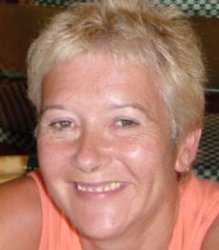Out of the population of 10 million in the Dominican Republic, around 30% live in the country, in small settlements known as campos. Life in the campo is very different from life in the towns and cities, due to the lack of infrastructure and lack of work. Poverty is rife, but someone the inhabitants of the campos survive, raise children who then often leave to find work in the towns and cities.
The houses in the campos are usually made of planks, sliced up palm trees, although the richer will build theirs out of concrete blocks. The poorest houses are made of twigs or sugar cane, woven together. The roofs are invariably zinc sheet. Inside the houses the floor will just be dirt, or concrete for those who can afford it. The number of rooms in the house, will again depend on how much money the occupants have. Those who can afford it have a bedroom separate from the living area, and some even have two bedrooms, one for the children. Otherwise the children sleep in with the parents.The living area may also have a kitchen at one end, but the majority has an outside kitchen or no kitchen at all. Cooking is usually done on a fogon, either made of cement like a table with an indent in it for the fire, or simply three concrete blocks on the floor with a space in the middle where you put either the wood or the charcoal.
One of the main problems in the campo is the water. In some areas the public water system delivers water in pipes, and a few people have a tap in the kitchen. More have a tap in the garden or maybe one in one garden which several people use. If there is no piped water to the community, then the alternatives are to dig a well, or to go to the river and conserve rainwater too. In some areas water is delivered in a truck – although most campo folk could not afford this.
In many campos, as the sun loses its heat in the late afternoon, you can see a steady stream of donkeys laden with plastic containers of all shapes and sizes, heading down to the river.
A lack of water means a lack of toilets, and the vast majority of campo houses have a latrine in the garden. In fact almost 50% of all homes in the Dominican Republic have a latrine rather than an indoor toilet. Apparently they get full, and so every few years the little zinc, wood, plastic, or tin structure ups sticks and is moved to another spot in the garden where a new hole is dug.
I remember visiting some of my husband’s friends in the campo in the hills above Barahona, in the south west. I asked to go to the toilet and was shown to the latrine, which was a relief as on some other occasions there was not even a latrine and when asking where the toilet was you would just be shown a load of bushes. Anyway, there I was in the latrine when I noticed a pile of corn on the cobs stacked neatly against the wooden wall. They had no corn on them – so just the cobs really. Having finished what I had to do, I went outside and asked my husband why there was a pile of cornless cobs in the latrine, did people eat corn on the cob while in there or what. He burst out laughing and explained that they were called tusas, and were used instead of toilet paper.
I was a tad confused, as I imagined that you would want to go to the loo, so had to firstly pick your corn on the cob, then take donkey to river to get water, collect sticks for the fogon, put water on to boil on your fogon, cook, then eat your corn off your cob, and hey presto you could then go and do your business. Hopefully by then it would not be too late.
Of course that is not what happens. The chickens eat the corn, raw, and then the stripped tusas are neatly stacked in the latrine ready for use. I did not try them, as I am always prepared for Dominican toilets, with wads of loo paper to the ready, but I was reliably informed they are very effective – if a tad scratchy.
Lindsay de Feliz lives in the middle of nowhere in the Dominican Republic with her Dominican husband, one stepson, 8 cats and 3 dogs. She was formerly Marketing Director of various financial companies in the City of London, and left the UK around 11 years ago to travel the world as a scuba diving instructor. She eventually came to the Dominican Republic on a 6 month contract, fell in love with the country and its people and stayed. Lindsay has a blog www.yoursaucepans.blogspot.com and is currently writing a book about her experiences over the last 10 years.


